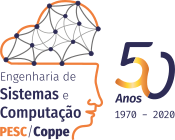Algoritmos de Planejamento em Dimensão Arbitrária
Autores
|
4754 |
Hélio Bomfim de Macêdo Filho
|
2108,257,613
|
|
4755 |
2108,257,613
|
|
|
4756 |
2108,257,613
|
Informações:
Publicações do PESC
Título
Algoritmos de Planejamento em Dimensão Arbitrária
Linha de pesquisa
Algoritmos e Combinatória
Tipo de publicação
Dissertação de Mestrado
Número de registro
Data da defesa
25/2/2010
Resumo
O movimento planejado de robôs consiste em traçar o movimento do robô de um ponto inicial qini para um ponto final qfim, evitando colisão com obstáculos e retornando o movimento se existir. Há duas principais filosofias utilizadas para resolver esse problema. A primeira consiste da construção explícita do espaço em que o robô pode se movimentar sem que haja colisão. O foco é resolver problemas de planejamento de movimento em espaços bidimensionais e tridimensionais. A segunda consiste da amostragem de pontos onde o robô pode se movimentar. O foco é resolver problemas de planejamento de movimento em dimensões superiores. Entretanto, na segunda filosofia, como não há uma construção explícita, não sabemos a forma dos objetos e temos que lidar com a incerteza sobre o formato dos obstáculos. Além dessas duas abordagens, há variações como, por exemplo, modelos realistas das cenas, como o caso em que os objetos não sejam longos e estreitos. Apresentaremos uma nova forma de resolver a variação citada como exemplo.
Abstract
Robot motion planning consists of building the path for the movement of a robot from a initial point qini to a destination point qend avoiding collisions with obstacles and returning the movement, if it exists. There are two main philosophies used to solve the problem. The first is based on the explicit construction of the space where the robot moves without collisions. It is better suited to solve motion planning problems in two-dimensional and three-dimensional spaces. The second is based on sampling the points where the robot can move. It is better suited to solve motion planning problems in higher dimensions. However, in the second philosophy, as there is no explicit construction, object shapes are not known and we must deal with the uncertainty of the obstacles shapes. Besides these two approaches, there are variations as, for example, realistic models for the scenes, as when objects are not long and narrow. We present a new way to solve the variation cited.
Arquivo




